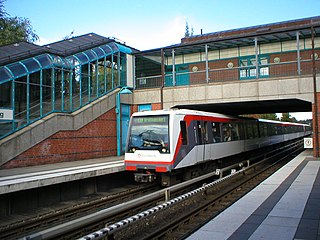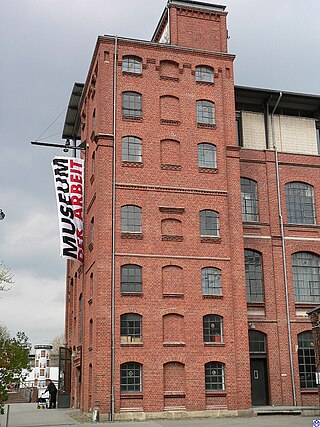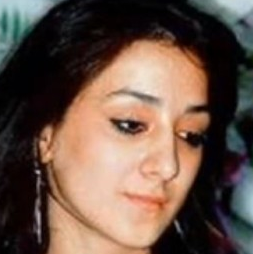
Degenerate art was a term adopted in the 1920s by the Nazi Party in Germany to describe modern art. During the dictatorship of Adolf Hitler, German modernist art, including many works of internationally renowned artists, was removed from state-owned museums and banned in Nazi Germany on the grounds that such art was an "insult to German feeling", un-German, Freemasonic, Jewish, or Communist in nature. Those identified as degenerate artists were subjected to sanctions that included being dismissed from teaching positions, being forbidden to exhibit or to sell their art, and in some cases being forbidden to produce art.

Lashkargāh, historically called Bost or Boost, is a city in southwestern Afghanistan and the capital of Helmand Province. It is located in Lashkargah District, where the Arghandab River merges into the Helmand River. The city has a population of 201,546 as of 2006. Lashkargah is linked by major roads with Kandahar to the east, Zaranj on the border with Iran to the west, and Farah and Herat to the north-west. It is mostly very arid and desolate. However, farming does exist around the Helmand and Arghandab rivers. Bost Airport is located on the east bank of the Helmand River, five miles north of the junction of the Helmand and Arghandab rivers. Because of the trading hubs, it is Afghanistan's second largest city in size, after Kabul and before Kandahar.

Deh Sabz District is situated northeast of Kabul City in Afghanistan. It has a population of 100,136 people. About 70% are Pashtuns and 30% are Tajiks.

Relations between Afghanistan and Germany reach back into the late 19th century and have historically been strong. 100 years of "friendship" was celebrated in 2016, with the Afghan President calling it a "historical relationship".

Richtweg is a public transport station for the rapid transit trains of Hamburg's underground railway line U1, located in Norderstedt, Germany.

The Internationales Maritimes Museum Hamburg is a private museum in the HafenCity quarter of Hamburg, Germany. The museum houses Peter Tamm's collection of model ships, construction plans, uniforms, and maritime art, amounting to over 40,000 items and more than one million photographs. It opened in a former warehouse in 2008.
German Afghans are German citizens with Afghan ancestry and non-citizen residents born in, or with ancestors from, Afghanistan. It is the largest Afghan community in Europe and part of the worldwide Afghan diaspora, of which it is one of the largest. In 2019, the Federal Statistical Office of Germany estimated the number of people of Afghan descent residing in Germany at 253,000, making it the ninth largest foreign background community in the country, the third largest from outside the EU, and the largest group from Asia excluding the Middle East and Caucusus. In particular, there are 35,805 Afghans in Hamburg alone. Offenbach am Main and Hamburg had the highest shares of Afghan migrants among all German districts in 2011.

The Museum for Hamburg History is a history museum located in the city of Hamburg in northern Germany. The museum was established in 1908 and opened at its current location in 1922, although its parent organization was founded in 1839. The museum is located near the Planten un Blomen park in the center of Hamburg. The museum is commonly reviewed among the museums of the city of Hamburg.

The Speicherstadt in Hamburg, Germany is the largest warehouse district in the world where the buildings stand on timber-pile foundations, oak logs, in this particular case. It is located in the port of Hamburg—within the HafenCity quarter—and was built from 1883 to 1927.

The Bucerius Kunst Forum is an international exhibition centre in Hamburg, Germany, founded in 2002 through the ZEIT-Stiftung Ebelin und Gerd Bucerius foundation. It is named after Gerd Bucerius and his wife, and located directly beside the Hamburg Rathaus. The exhibition centre shows 3 - 4 exhibitions per year, in co-operation with other museums and collections. The exhibition centre participates in the Long Night of Museums.

The Museum für Kunst und Gewerbe Hamburg is a museum of fine, applied and decorative arts in Hamburg, Germany. It is located centrally, near the Hauptbahnhof.

The Wittmoor bog trackway is the name given to each of two historic corduroy roads, trackway No. I being discovered in 1898 and trackway No. II in 1904 in the Wittmoor bog in northern Hamburg, Germany. The trackways date to the 4th and 7th century AD, both linked the eastern and western shores of the formerly inaccessible, swampy bog. A part of the older trackway No. II dating to the period of the Roman Empire is on display at the permanent exhibition of the Archaeological Museum Hamburg in Harburg, Hamburg.
The following is a timeline of the history of the city of Hamburg, Germany.
DOBAG is the Turkish acronym for "Doğal Boya Araştırma ve Geliştirme Projesi". The project aims at reviving the traditional Turkish art and craft of carpet weaving. It provides inhabitants of a rural village in Anatolia – mostly female – with a regular source of income. The DOBAG initiative marks the return of the traditional rug production by using hand-spun wool dyed with natural colours, which was subsequently adopted in other rug-producing countries.

The Great fire of Hamburg began early on May 5, 1842, in Deichstraße and burned until the morning of May 8, destroying about one third of the buildings in the Altstadt. It killed 51 people and destroyed 1,700 residences and several important public buildings, necessitating major civic rebuilding and prompting infrastructure improvements. The heavy demand on insurance companies led to the establishment of reinsurance.

The Hamburg Museum of Work is a museum in Hamburg-Barmbek. Its major theme is changes in work and living during the last 150 years. It examines and displays the social cultural and economic effects of industrialisation. The museum is an anchor point on the European Route of Industrial Heritage (ERIH).

Shushi Carpet Museum was founded by Vardan Astsatryan in 2011. The museum opened its doors to the public in 2013, when its location, Shusha, was under the control of the self-proclaimed Republic of Artsakh.

Morsal Obeidi was a German-Afghan girl who was murdered in an honour killing in Hamburg. Her brother Ahmad Sobair Obeidi killed her, making it an act of sororicide, and he was jailed for life for the act.

Mahbuba Elham Maqsoodi is a German-Afghan artist based in Munich, Germany. She is recognized for miniature paintings and painting on glass, including designing 34 stained glass windows for Tholey Abbey in Germany. She is an advocate for women's rights, a published author, and received a PhD in Art History.

















